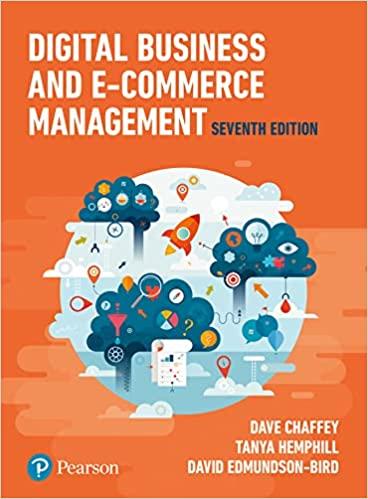Question
https://www.coursera.org/learn/gmba8033/home/welcome Analyse a negotiation through the lens of an academic theory or framework. You will apply a theory or framework to a case study of
https://www.coursera.org/learn/gmba8033/home/welcome
Analyse a negotiation through the lens of an academic theory or framework. You will apply a theory or framework to a case study of your own creation, then critically review the theory or framework.
Step 1: Select and explore theory or framework
Using the academic readings* provided in Weeks 1-2 (or other academic resources identified from your wider reading), identify a theory or framework for analysis. You should study the theory or framework closely reading and reflecting on the meaning of the theory and what social or human phenomena it seeks to explain. This may require you to read more widely on the topic. For example you should note what other authors have said about the theory or framework including any criticisms you may find. *Academic readings may include a peer reviewed journal, a book/chapter, or business periodicals such as Harvard Business Review.
Step 2: Problem: Create case study
Identify a negotiation or conflict case (preferably from your own experience) and analyse a succinct summary of the case. The summary should cover details about the context, the parties and their interests, the key issues, and any confounding or complicating factors or 'critical incidents'. Ideally this should be a "live" case, i.e. something taking place at the time of your writing and not yet resolved. Note: students writing about real people or situations should disguise the identities of the people or companies involved by assigning pseudonyms instead of using real names.
Step 3: Analysis: Applied theory
Apply the chosen theory (as per Step 1) or framework to the case and note any new perspectives or insights that emerge when you look at the case through the 'lens' of the framework or the theory:
- What elements came into sharper focus for you?
- What did you notice about the case that you hadn't previously been aware of?
- Were there any new revelations that came to light such as options to resolve the conflict or ways to finalise the negotiation when you looked at the case through this new 'lens'?
Step 4: Conclusion: Critical review
Having applied the theory or framework to a case, analyse your conclusions about the utility of the theory or the framework:
- What are the strengths and weaknesses of this framework or theory?
- In what context is this theory or framework most relevant?
- How might this theory, framework or idea be further developed?
- How practical is the theory/framework?
- What are the limitations of the framework, for example, does it only seem to apply in a limited context?
Step by Step Solution
There are 3 Steps involved in it
Step: 1

Get Instant Access to Expert-Tailored Solutions
See step-by-step solutions with expert insights and AI powered tools for academic success
Step: 2

Step: 3

Ace Your Homework with AI
Get the answers you need in no time with our AI-driven, step-by-step assistance
Get Started


